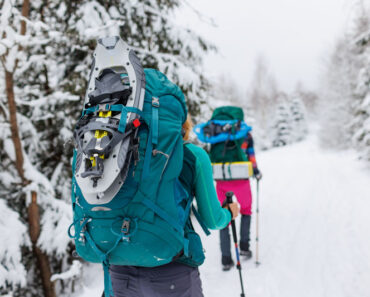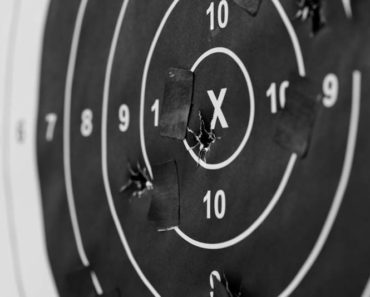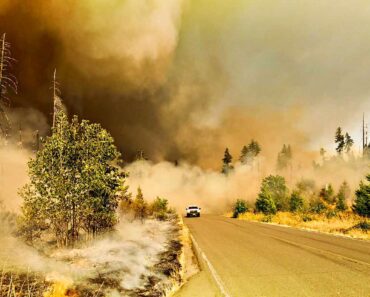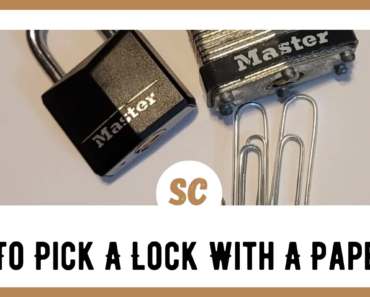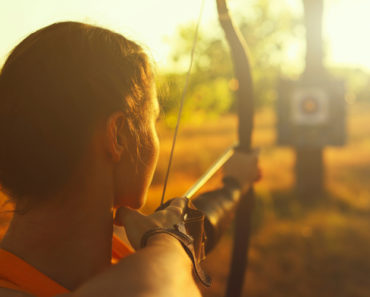In 1981, Steven Callahan was a boat builder attempting to cross back across the Atlantic by himself in Napoleon Solo, a 21’ wooden sailboat. He awoke to great crash to find his hull had been breached and was quickly filling with water. This surely was not the most pleasurable way to wake up. Callahan believes that the damage to his boat was caused by a whale strike. (Wikipedia, Steven Callahan, 2024)
Lessons Learned
The Human Mind is the Most Important Survival Tool
Having researched thousands of survival ordeals and read more than a few books on survival psychology, I encountered certain recurring themes. Chief among these is importance of survival psychology and the role that a healthy mind, outlook, and sense of humor play in surviving survival ordeals.


Once a survivor loses the psychological battle, the loss of the physiological fight for survival follows soon after.
Laurence Gonzales, author of Deep Survival observed the following about Steven Callahan, comparing his response to that of Mark Adams, fist mate of the ketch Trashman, in a similar scenario, in that both men were on sinking sailboats, but whereas Callahan’s Solo is believed to have collided with a whale, the 58’ Trashman foundered in 40-50’ seas.
“Mark Adam the first mate was screaming, ‘We’re all going to fu@&in’ die! We’re all going to fu@&in’ die!’ In his panic, he inflated the life raft before attaching it to Trashman. The wind immediately picked it up. ‘It blew through the rigging, skimmed the top of a wave, and vanished.’”
Callahan was able to observe his situation from the third person, determine what needed to be done, and then do it. He had the presence of mind to tie his raft off to the boat before inflating it. Once in the life raft, Callhan decided to swim back into the sinking vessel to get his abandon ship bag which contained emergency supplies he would need to survive his ordeal adrift at sea.
Gonzales summed up Callahan’s actions eloquently:
“He had saved his life by risking it, which is the essential task of every organism. No risk, no reward. No risk, no life.” Laurence Gonzales (Gonzales, 2003)
Steven Callahan was a survivor and what saved him was between his ears. He lived where others died mainly because he prepared and was able to keep it together, observe the situation, determine a course of action, and then execute his plan, when his world went sideways. Adams and another (John Lippoth) went on to drink seawater. They became delusional, left the safety of the life raft and were eaten by sharks. (Wikipedia, 2024) Another crewmember succumbed to injuries that occurred when the ship sank, leaving Deborah Kiley and Brad Cavanagh as the only survivors of Trashman. They were picked up by a Soviet cargo vessel after five days in a zodiac raft.
A Raft of Vessel Adrift Eventually Develops its Own Ecosystem
This process is born out, not only by Steven Callahan’s observations, but also by other survival ordeals adrift at sea. As a vessel drifts, algae and barnacles begin to attach to it and tiny organisms seek any shade and shelter they can find in the open ocean. These, attract tiny fish which feed on them and make use of the shade and cover. These, in turn, attract larger fish.
The first fish most survivors take notice of are triggerfish, which peck with beak-like jaws, at barnacles and similar organisms which start forming a crust on the raft or boat hull. Survivors feel and hear this pecking. Consequently, triggerfish are the first meal most survivors pull from the sea. This cover, triggerfish and other small fish feeding on barnacles and small fish begin attracting sea turtles, larger predator fish, and eventually attract the attention of sharks.
So, the survivor adrift in a raft or boat will finds that their vessel slowly develops its own little ecosystem which follows it as it drifts. This is a good thing for the survivor because it brings food within reach. (Callahan, 1986)
Don’t Be a Fundamentalist
A survivor must know when to obey “the rules” and when to break them. You know those triggerfish that I mentioned are the first meal most survivors adrift pull from the sea? Survival manuals say, “NEVER eat triggerfish.” This is because triggers sometimes inhabit coral reefs and feed on small marine organisms containing ciguatoxins, which cause ciguatera fish poisoning. But this is not true of triggerfish in the open ocean away from reefs. In fact, one can find triggerfish on the menu in many seafood restaurants.
Or you can take the advice of popular military and military-adjacent survival manuals as gospel and skip that first meal. You might not make it another couple of weeks until the next species shows up though.
What to Pack
Callahan was very glad he packed certain items, lamented not having certain items and the performance of others. Here are some of the key takeaways based on his comments and my observations:
- Heavy Fishing Line – Steven mainly survived off triggerfish and dorados, the latter of which easily broke the cod line he packed in his abandon ship bag as survival fishing line. Fishing line doesn’t last forever, and some types and brands last longer in storage than others. Monofilament should be swapped out every 1-3 years. Braided lasts the longest, up to 10 years. So, tossing some old UV-damaged line in your survival bag is a bad idea, especially if you’ll be using it as a handline, which is harder on fishing line than using it with a fishing rod. The flexibility of a fishing rod helps prevent breakage.
- Wire Leaders – Another thing Steven Callahan wished he had to help catch the dorados was wire, to make leaders to prevent predator species from biting through the line. Interestingly, when he commented on this, a boy asked him why he didn’t use the wire that ran to the strobe on top of the raft, a fact he had missed during his 76 days on the raft. He responded by saying he would bring the kid along the next time he’s adrift in a life raft.
- Spear Gun of Hawaiian Spear – As a last-minute purchase in the Canary Islands just before he embarked on the fateful crossing of the Atlantic, Callhan purchased a small speargun, which luckily barely fit in his abandon ship bag. With the dorados breaking his line, he pressed the speargun into action. He lost the spear tip that came with it and had to improvise one from the blade of a butter knife and his speargun with a 6’ (2m) range was reduce to a neandertal-style stabbing spear.
- Redundancy – Callahan’s difficulties with the line and speargun demonstrate the importance of redundancy in survival kits, not only as a hedge against loss, but because having more tools and supplies augments the survivor’s sustainment time and his capability or capacity to adapt to changing circumstances and to the unknown. In Callahan’s case, different weights of line, knot-able coated leader wire, and extra bands and spear tips would have enabled him to devote energy to solving other problems by reducing the long hours he had to devote to fishing.
- Water Procurement/Desalination – Steven Callahan brought three WWII-era surplus solar stills that came without instructions, necessitating that he dissect one of them to understand how they worked. By using cannibalized parts and making modifications, he was able to get the solar stills working, but there was a learning curve to getting them up and producing, and he contaminated the drinking water with saltwater several times. For the last month or so of his ordeal, he estimated that he lived off approximately one pint of water, per day, between the solar still and catching rainwater. They probably work fine in a pool, but it is hard to keep saltwater separate from fresh when the wave action of the ocean plays basketball with the solar still. Today, a compact hand-pumped desalinator should be standard equipment for an abandon ship bag for anyone who can afford it. A tarp should be rigged as a rain catchment and when it rains, as much rainwater should be captured as possible. Storage bladders should also be included, but there are so many water bottles floating in the ocean today, that survivors don’t report difficulty finding water containers.
- Supplies to Manage Saltwater Sores – Salt water sores occur when breaks in the skin are exposed to saltwater. They are treated by keeping them dry and applying a topical disinfectant. Unfortunately, getting and keeping the skin dry is difficult to do in a life raft since, without an elevated seat, the water flows down to where you sit, and water is constantly entering the raft. Raft survival kits or abandon ship bags should include a bail bucket, sponges, a quick-dry towel, and topical disinfectant. While you may not be able to keep the raft dry, regularly bailing and drying can help manage the amount of seawater in the raft.
- Emergency Communications Equipment – Back in 1981, EPIRBs were not monitored by satellite like they are today. This meant that Callahan’s EPIRB only really had a chance of being detected in sea or air lanes. Today, emergency communications equipment is more effective, but there are still great expanses of both land and sea where you could hit that button until the battery goes flat, recharge, rinse and repeat, and nobody will every come looking for you. Many nations have much more pressing problems to solve other than rescuing foreign adrenaline junkies. They won’t be sending a ship or a helicopter for you. For this reason, survivors should be prepared to survive on their own and make sure that their communications equipment can contact someone who cares enough and has the financial or physical capability to mount a rescue operation to come and get them. Today it is a simple matter to pack a GPS and a satellite phone or PLB with two-way texting via satellite, a universal charge cable, and solar battery pack, but you may also need someone willing to pick you up.
- Extra Cordage – Cordage has many uses on a raft. It can be used to create dummy cords for survival gear, so it doesn’t get washed or dropped overboard. I can’t recall a single survival ordeal at sea where equipment was not lost overboard. Dummy cords may seem like a hassle, but if you drop your knife at sea, it’s gone. Extra cordage is also needed to run lines to dry clothing and meat. Survival shelters, be a raft, a boat, or an airplane fuselage could often be mistaken for butcher shops because they have thin strips of meat hanging, which brings be to the next item.
- Solar Oven – Barring some way to cook, survivors often resort to sun drying meat, which helps reduce the pathogen load by eliminating moisture and exposing them to heat and UV light. Salvador Alvarenga used the cover of his outboard motor as an improvised solar oven. Any surface that heats up in the sun would help get the job done, so including some thick aluminum sheeting in your abandon ship bag or life raft survival gear should fill the need.
Callahan, S. (1986). Adrift 76 Days Lost at Sea. New York, New York: First Mariner Books, Houghton Mifflin Harcourt Publishing Company.
Gonzales, L. (2003). Deep Survival. New York, New York: W. W. Norton & Company.
Wikipedia. (2024, April 04). Deborah Scaling Kiley. Retrieved from wikipedia.org: https://en.wikipedia.org/wiki/Deborah_Scaling_Kiley
Wikipedia. (2024, February 24). Steven Callahan. Retrieved from wikipedia.org: https://en.wikipedia.org/wiki/Steven_Callahan


